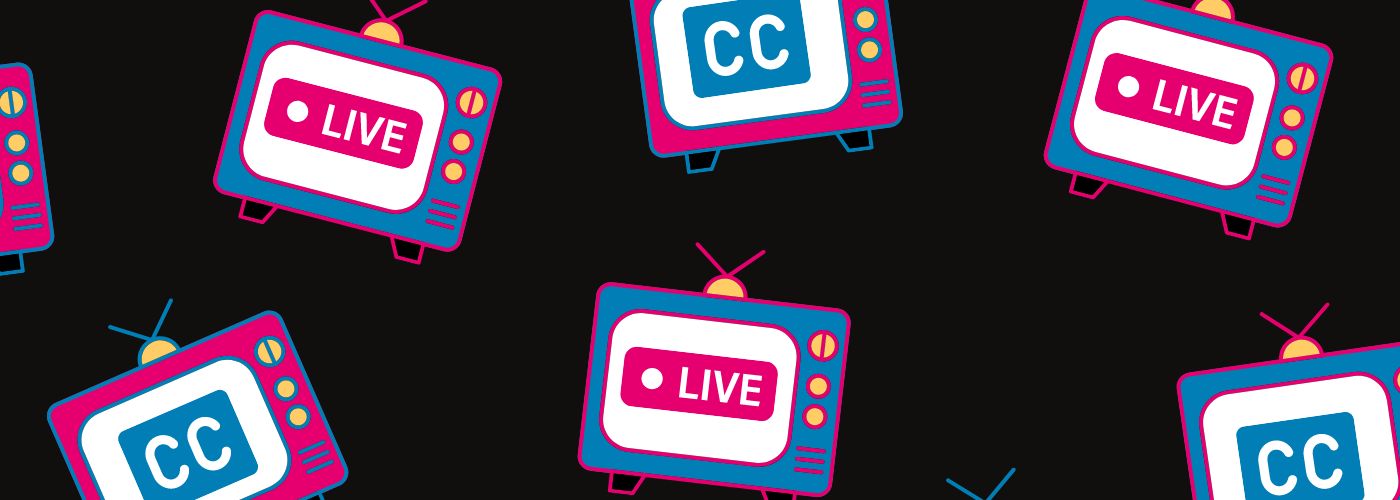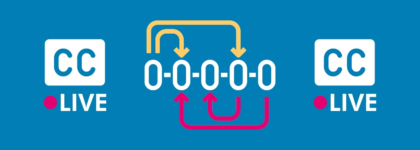10 Questions to Ask a Live Automatic Captioning Vendor
Updated: August 21, 2023
Understanding Live Automatic Caption Quality [Free White Paper]
When you write, record, edit, and release a video, you’re typically able to give your team the necessary time to caption your video content. However, with live video, you don’t have that luxury.
Live video offers many benefits that traditional pre-recorded video content doesn’t. For example, viewers can engage with speakers or presenters during live video. In an experiment by Biteable, Facebook live videos attracted almost twice as many viewers as prerecorded videos on Bitable’s Facebook page. However, live video comes with its own set of challenges. One of these challenges is the delay of live captions during a program.
The FCC’s captioning standards account for this factor: “Although we recognize the need for a slight delay in the delivery of captions for live programming, the delay in the presentation of live captions should be kept to a minimum, consistent with an accurate presentation of what is being said and the overall goal of ensuring that captions enable viewers to follow the program.”
Delayed or inaccurate captions for live audio worsen the viewing experience for those who use closed captioning due to hearing loss, environmental circumstances, and more.
This is where a live automatic captioning solution comes in. When enabled, accurate live captioning makes your live video content more accessible. It is important that you select a vendor that understands your needs, budget, and standards for live captioning.
If you’re in the market for a video live captioning solution, ask these questions to your potential vendors to see if you’re partnering with the best provider to meet your needs.
1. What is your average accuracy rate?
Even with the anticipated delay and related hurdles of live automatic captioning (LAC), vendors should be able to get as close as possible to the industry standard of 99% caption accuracy.
Hitting that ideal 99% isn’t easy – even The U.S. House of Representatives set its own bar at 98.6%. However, it’s important to note that longer video files tend to have a lower accuracy rate – and since it’s common for live video to run longer than pre-recorded video, improving your video’s accuracy rate with the right LAC tool decreases the chance of seeing a higher percentage of captioning errors.
Learn more about Live Automatic Captioning Quality ➡️
2. What ASR engine do you use?
Automatic speech recognition, or ASR, is the key to accurate live captioning. Unfortunately, not all ASRs offer the same accuracy and reliability, so you’ll want to ensure the speech-to-text tool can meet your demands for speed and clarity, even when the audio quality is in question.
Here at 3Play, we partner with Speechmatics, which has been an industry leader for more than a decade. We’ve officially upgraded our ASR engine for Live Auto Captioning to Speechmatics v2 Real-Time.
3. What is the process like to get started with live automatic captioning?
The demand for live video content has never been higher – and it’s growing – which means an efficient onboarding process is a must. Your vendor should be prepared to educate your team on how you’ll be using the product for live automatic captioning and explain the journey from start to finish.
A good LAC vendor will provide you with resources to map out your process of getting started with them, like a Quick Start Guide.
4. Do you offer an upgrade path for full captioning or additional services?
As imperative as live captioning is, it’s only a piece of the video captioning and accessibility puzzle. As you create more video content, your live audio captioning vendor would ideally be able to support you in those realms and more. Talk to your potential vendor about these options and see if the company meets your needs:
- Captioning for prerecorded videos
- Transcription services
- Audio description
- Translation and subtitling services
5. Do you allow customers to provide a wordlist or glossary of terms?
There is a concern that live captions will incorrectly display certain names or terms. For example, if the phrase “CRM software” is included in your live event, you don’t want captions to read “see are M software.”
A proactive solution to this issue is a wordlist, where users can submit a list of words and terms that will be used in the video and specify the best way for those words to be presented, spelled, capitalized, and punctuated.
This is an important question to ask, as incorrect captions could become a recurring issue.
6. Which platforms do you integrate with?
Live video thrives on platforms with built-in audiences and user bases – and live automatic captioning is most necessary on these platforms. When speaking with potential vendors, ask them if they integrate with leading live streaming platforms, such as:
7. What output formats are provided after the event?
Live captioning serves your live audience, but what happens after the stream ends?
For those who want to repurpose their video content on their website or quote the video in articles or blog posts, an output in their preferred text format is key. Ask caption providers what their options are for caption output formats to ensure your video content can be repurposed.
8. What does the workflow look like?
A successful integration will ensure a smooth LAC experience, thus minimizing any impact on existing workflows that sync captions with a live stream.
Unfortunately, not all vendors have integration partners to support LAC on all live streaming platforms, meaning some workflows will need to be uniquely developed and employed. Speak to potential vendors about how successful their LAC workflows have been in the past and what they do to create these workflows to better understand if the company can meet your needs.
9. What is the cost for live auto captioning?
A thorough cost-benefit analysis is an important step in any buying decision. For live automatic captioning vendors, here are a few factors to consider – as well as some questions to ask for each – which will help you land on the best solution for your organization.
- Pricing Model: Are services charged by the minute or hour? Is there a minimum charge per video? Will prices be rounded up to the nearest minute?
- Other Fees: Will vendors require additional payment to identify speakers, or deliver captions in certain formats?
- Bulk Discounts: If it is constantly churning out live video content, will your organization be able to save money in the long run by securing a bulk discount from the vendor?
- Value: Does the benefit to your organization outweigh the cost? Does the vendor’s cost deliver the best value compared to other potential vendors?
10. Do you offer customer support?
Customer support for your LAC solution is an important factor that should be strongly considered. Depending on the amount of live content your organization is producing, a reliable support experience – when needed – may be necessary to ensure captions are accurate and your content is accessible.
See if vendors have a knowledge base, training videos, and customer success reps who are ready to help you utilize the LAC product to its fullest extent.
Securing a Live Automatic Captioning Vendor
Equipped with this list of questions, you’ll be prepared to determine which solution is the best live automatic captioning vendor for your organization – giving you the ability to create an abundance of accessible, engaging video content on your preferred live streaming platform.
This post was originally published in December 202 by AJ Beltis and has been updated for freshness, accuracy, and comprehensiveness.
Further Reading

Subscribe to the Blog Digest
Sign up to receive our blog digest and other information on this topic. You can unsubscribe anytime.
By subscribing you agree to our privacy policy.






